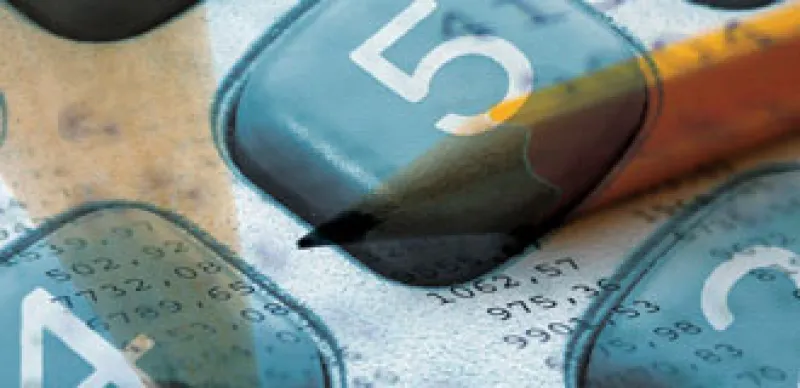For years the steady march of technology made it seem as if equity trading costs could go in only one direction — down. Then there was the great disruption.
The dramatic surge in volatility following the collapse of Lehman Brothers Holdings and the seizing up of financial markets last fall caused a significant uptick in trading costs in the U.S. and many other markets. It turns out that all the algorithms and dark pools in the world are of limited use if buyers and sellers are too scared, or uncertain about the outlook, to actually transact.
The crisis appears to have been an aberration rather than a turning point, though. Market participants haven’t lost faith in the power of technology. Indeed, the competition to develop newer, faster, more discreet means of market access has only intensified over the past year.
(Click on the following titles to view tables showing the leaders in global trading , based on data from the 2009 Elkins/McSherry 47-country universe, along with rankings of individual firms in trading of NYSE and Nasdaq stocks.)
In addition, volatility has fallen substantially over the past six to nine months as equity markets have rallied. The Chicago Board Options Exchange’s volatility index, or VIX, which hit an all-time high of 89.53 in October 2008, averaged 25.49 in the third quarter of 2009, close to its precrisis historical average of 20.3.
The combination of ever more powerful tools and the return of liquidity has been having a beneficial impact on costs in recent months, industry executives say. “Transaction costs have come down in line with volatility,” says Greg Tusar, co-head of electronic trading at Goldman, Sachs & Co. in New York.
That development can only cheer investors. Although stock prices in the U.S. and Europe have recovered by roughly two thirds from their March lows, many investors haven’t fully participated in the rebound. Prices remain well off their 2007 highs, and institutions need to claw back basis points anywhere they can in their bid to recover from the big losses suffered in the bear market.
The impact of these cyclical and secular market forces can be seen in our 13th annual survey of transaction costs, conducted for Institutional Investor by New York–based Elkins/McSherry, a subsidiary of Boston’s State Street Corp. The high volatility that prevailed for much of the past year boosted the average overall cost of equity trading in the U.S. by 10.87 percent for New York Stock Exchange–listed securities in the 12 months ended June 30, compared with the same period a year earlier. For those quoted on the Nasdaq Stock Market, the rise was a more modest 2.63 percent.
Despite the increase in costs, the U.S. remains the cheapest place to trade around the world, according to the survey. At just 15.40 basis points for NYSE stocks and 17.97 basis points for Nasdaq, the U.S. costs handily beat the global average of 41.38 basis points based on the volume-weighted average price, or VWAP, benchmark. The global cost was up from 40.86 basis points a year earlier.
Among major markets, Japan comes closest to the U.S., with an average cost of 21.29 basis points, down slightly from 21.50 basis points a year earlier. France and Germany are close behind, with average costs of 25.19 and 25.45 basis points, respectively, up from 23.50 and 23.56 basis points a year earlier. The U.K. trails, with costs of 74.45 basis points for equity purchases and 22.59 basis points for sales, compared with 72.25 and 22.65 basis points a year earlier.
Other countries saw widely divergent changes in trading costs; 25 of 47 nations’ costs rose over the 12 months ended June 30. The average trading cost in Argentina was up 58.73 percent, while that in Egypt fell 51.55 percent. “The theme of the year is volatility caused the tails to get quite fat,” says Elkins/McSherry’s president, James Bryson.
Although volatility had a significant impact on costs over the past year, the big picture remains one of cutthroat competition and fast-paced technological change. Structural adjustments — including the growth of high-frequency trading, the fragmentation of liquidity pools among electronic platforms and more recent efforts to reaggregate them — are the driving forces in the industry.
The number of trading venues, ranging from upstart electronic exchanges to dark pools of liquidity, which match trades discreetly without posting prices, continues to proliferate. Proponents say they increase competition and put downward pressure on trading costs, both in terms of fees and market impact. But the sheer number of places to trade combined with the use of algorithms to break down orders into smaller lots make it more complex for institutions to manage their trading and can make it harder to transact sizable orders.
Technology has also fueled the popularization of high-frequency trading, a practice in which firms place a barrage of small orders over the course of microseconds to capture tiny bites of profit. Tabb Group, a Westborough, Massachusetts–based research firm, estimated in a September report that such trading accounts for as much as 70 percent of total U.S. equity volume. Flash orders, which give some high-frequency traders a “sneak peak” at orders, have also proliferated and drawn the attention of the new Securities and Exchange Commission chief, Mary Schapiro, who has proposed a measure to ban the practice.
Critics of high-frequency trading say that the practice disadvantages end-investors because a multitude of small trades tends to push the execution price of an institution’s bigger trade to the maximum a buyer is willing to spend (or the minimum it would be willing to sell for). Another cost is the payment of rebates to liquidity providers through maker-taker pricing schemes, which are dominant in the U.S. equity market. Proponents counter that high-frequency trading adds liquidity to markets, increases competition among exchanges and alternative trading systems for this business, and lowers fees.
“Technology has profoundly changed the market structure,” says Goldman Sachs’ Tusar, citing such benefits as reduced costs, narrower spreads and greater displayed depth. Goldman Sachs ranks No. 13 among brokerage firms in global trading costs, with a 9.77 basis point differential compared with the VWAP average. Bloomberg Tradebook of New York tops the global ranking, with a differential of 26.63 basis points.
Volatility combined with technology has been a boon to firms such as Fox River Execution Technology, says Ronald Santella, CEO of the Geneva, Illinois–based outfit. Fox River ranks third among brokerages in Nasdaq trading and No. 7 in NYSE trading, with average costs that were 14.22 and 11.61 basis points below the VWAP average, respectively; Jersey City, New Jersey’s Knight Direct leads the Nasdaq ranking, with an average cost of 17.39 basis points below VWAP, and Bloomberg Tradebook heads the NYSE ranking, with a differential of 14.11 basis points. Santella credits the firm’s algorithm, which mimics a human trader and tends to outperform in volatile markets, for attracting a slew of new business last year. “We’ve tripled our number of clients in the last year,” Santella says.
As Newton discovered, every action has an opposite reaction. In the case of trading, the fragmentation caused by competing exchanges and algorithmic activity is prompting some players to attempt to reaggregate pools of liquidity to help traders execute larger block trades.
Last month, New York–based agency broker Instinet launched a new dark pool called BLX, which is designed to electronically aggregate multiple orders from both buy- and sell-side participants and consolidate them into block-size trades. “We are trying to contain cutting up the market too much,” says Anthony Abenante, co-CEO of Instinet, a subsidiary of Japan’s Nomura Holdings. Instinet ranks second in global trading among brokerages, with an average cost of 21.88 basis points better than VWAP.
In January, NYSE Euronext and Bids Holdings, an ATS owned by a dozen financial services firms, launched the New York Block Exchange, a dark pool and exchange joint venture for block trade aggregation. NYBX has achieved an average buy-side order size of 38,197, ranking it third behind Pipeline Trading Systems and Liquidnet, according to New York–based Rosenblatt Securities.
Mergers and acquisitions among exchanges and ATSs may also help to reaggregate liquidity. The London Stock Exchange recently announced it is in exclusive negotiations to acquire Turquoise Trading, an alternative exchange and dark-pool operator backed by nine global banks, which had been siphoning trading volume off of the LSE.
The next generation of technologies that will change how traders interact with the market will be related to price discovery, says Goldman Sachs’ Tusar. “It’s about how investors search for liquidity, how they use nondisplayed order types and how they adapt to changing price discovery,” he says. There is also strong interest from the buy side to know where their orders go and how they get routed, he says.
“It’s an arms race,” says Pipeline Trading Systems’ chairman and CEO Alfred Berkeley III. Hedge funds are investing in “better radar” to detect order flow, he says, “and we are investing in better stealth technology to hide” that information. Pipeline, a New York–based dark-pool operator, ranks No. 15 among brokerages in NYSE trading and No. 8 in Nasdaq trading, with costs of 6.26 and 6.49 basis points below VWAP, respectively.
With all these tools and alternatives around, what’s a buy-sider to do? “We go to as many pools as we can and use broker algos as well as customized algos” in search of the best execution at the best price, says Floyd Coleman, co-head trader at AXA Rosenberg Investment Management in Orinda, California. The firm ranks No. 2 among investment managers both in NYSE trading, with a cost of 16.47 basis points below VWAP, and in Nasdaq trading, with a differential of 17.63 basis points.
Coleman attributes his firm’s success in keeping costs low to patience, consistency and an unwillingness to chase prices. “We stick to our style of trading, while the other side just wants to get [the order] done and doesn’t care as much about market impact,” he says. “In the end the proof is in the performance.”






